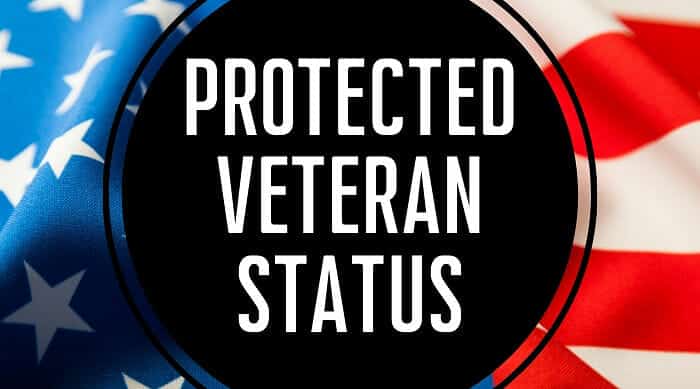What Is A Protected Veteran?
Understanding the term “protected veteran” necessitates a comprehensive examination of the legal protections and associated rights afforded to certain categories of military service members. The classification stems primarily from federal legislation designed to safeguard against discrimination and to promote equitable opportunities in employment. The Veterans’ Employment and Training Service (VETS) defines protected veterans as those who fall under specific conditions, which merit a closer look.
Firstly, it is imperative to delineate the categories of individuals classified as protected veterans. These categories include disabled veterans, recently separated veterans, active-duty wartime or campaign badge veterans, and armed forces service medal veterans. Each category represents a precise point of distinction that acknowledges the varied experiences of veterans and the unique contributions they have made during their service.
1. Disabled Veterans
Disabled veterans are those who possess a disability rating from the Department of Veterans Affairs (VA). This designation not only highlights their service but also underscores the sacrifices made, often linked with the long-term effects of military engagements. This classification is particularly significant as it provides protections that help prevent discrimination in employment settings, ensuring that companies must provide reasonable accommodations to help these veterans succeed in the workplace.
2. Recently Separated Veterans
A soldier is considered a recently separated veteran if they have been discharged from active duty within the past 36 months. This timeframe is pivotal; it reflects the transitional period when veterans may face challenges readjusting to civilian life. Employers are encouraged to give special consideration to these individuals, recognizing that they may need additional support as they navigate the complexities of the job market.
3. Active-Duty Wartime or Campaign Badge Veterans
Veterans who served during a time of war or who have participated in campaigns recognized by the military are classified under this category. Such service not only demands immense courage but also exposes veterans to unique experiences that could influence their perspectives and abilities in civilian employment. These veterans are afforded protections to ensure their service background is valued and recognized in hiring practices.
4. Armed Forces Service Medal Veterans
Lastly, those who have received the armed forces service medal for participation in operations not covered under the traditional wartime definitions qualify as protected veterans as well. This distinction is crucial in recognizing that valuable service can encompass a range of experiences beyond combat, affirming that all forms of military participation merit respect and protection.
Legal Protections
The entitlements given to protected veterans encompass various legal protections primarily set forth in the Vietnam Era Veterans’ Readjustment Assistance Act of 1974 (VEVRAA). Employers with federal contracts or subcontracts are mandated to adhere to these regulations, promoting a fair hiring process. The law stipulates that employers must make affirmative efforts to employ and promote qualified protected veterans. This legal framework is instrumental in providing veterans with avenues for employment free from discrimination based on their service.
Challenges Faced by Protected Veterans
Despite robust legal protections, many protected veterans encounter significant challenges as they transition from military to civilian life. One prevalent issue is the discrepancy between military and civilian skill sets. Veterans often find themselves struggling to translate their military experiences into skills that are digestible and appealing to civilian employers. This gap in understanding can deter potential employers from recognizing the value such veterans bring to the workforce.
Moreover, the stigma surrounding mental health issues, particularly post-traumatic stress disorder (PTSD), can pose barriers to employment. Even with protective laws in place, some employers harbor misconceptions about veterans’ mental health, leading to unwarranted discrimination. It is imperative to foster a corporate environment that dispels these myths and emphasizes a more profound understanding of the struggles faced by veterans.
Societal Transformation and Support Systems
To cement the significance of protected veterans in the workplace, society at large must actively engage in transforming the narrative surrounding them. Initiatives such as veteran mentorship programs, corporate training on diversity and inclusion, and advocacy for veterans’ rights can create a ripple effect, fostering a culture of support. Engagement from local communities, businesses, and veteran organizations plays a crucial role in ensuring that protected veterans transition smoothly into the civilian workforce.
Furthermore, the role of technology in aiding veterans cannot be overstated. Online platforms specifically designed for veterans can bridge the gap between their military experience and civilian job opportunities. These resources provide access to training and employment centers that cater specifically to the needs of veterans, thus amplifying their chances of finding fulfilling careers.
Conclusion
In conclusion, the designation of a protected veteran encompasses a rich tapestry of experiences and legal rights designed to ensure equitable opportunities in the workforce. Recognizing the different categories of protected veterans enables a deeper understanding of their unique challenges and contributions. By continuing to advocate for their rights and ensuring supportive environments both in the workplace and within society, we can honor the service of these individuals and facilitate their successful reintegration into civilian life. This commitment not only serves the veterans themselves but enriches the broader community fabric, cultivating a society that values sacrifice, resilience, and diversity.
